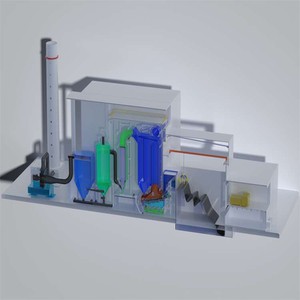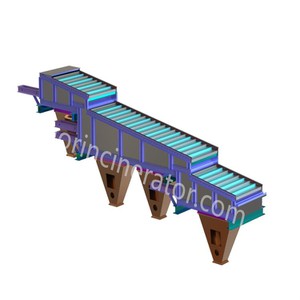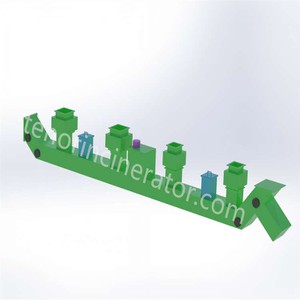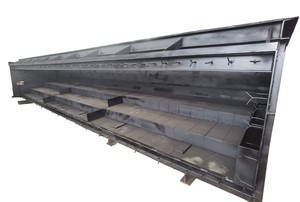Normal Adjustment Thinking
We can use the heat balance equation to analyze: QDW = Q1 + Q2 + Q3 + Q4 + Q5 + Q6 (kJ/kg).
If expressed as a percentage of output heat, it is: Q1 + Q2 + Q3 + Q4 + Q5 + Q6 = 100%.
In the formula, Q1 is the boiler efficiency, Q2, Q3, Q4, Q5, and Q6 are the percentages of various heat losses, including smoke exhaust loss, incomplete chemical combustion loss, heat dissipation from incomplete mechanical combustion loss, and physical heat loss from ash.
From this, we can analyze the main ideas for increasing waste-to-energy:
▪️Recover the maximum heat energy;
▪️Produce the least flue gas;
▪️Produce the cleanest flue gas;
▪️Produce high-quality slag (low combustible components in the slag);
▪️Operate with the highest efficiency, lowest cost and least raw material consumption;
▪️Control each combustion link as much as possible;
This is the most ideal state for adjusting the incineration power generation unit, and it is also our main direction to increase the amount of waste incineration. The specific development of all ideas must revolve around the above points.
Idea 1 to increase waste incineration capacity: heat source loss
Exhaust heat loss is part of the heat taken away by the flue gas when it leaves the last stage heating surface of the boiler, and is the main heat loss of the boiler.
This value can be obtained by the difference between the exhaust temperature enthalpy and the cold air enthalpy.
Q2 = (Hpy-HIk) (1-94/100) Where: Hpy is the exhaust enthalpy value, Hk is the cold air enthalpy value (including the size of the excess air coefficient). From the above formula, it can be seen that the size of the exhaust heat loss mainly depends on the exhaust temperature and the size of the excess air coefficient.
The exhaust temperature is one of the basic design parameters of the boiler and should not be too high or too low. According to research, when the excess air coefficient of the boiler is constant, the exhaust heat loss will increase or decrease by about 1% when the exhaust temperature increases or decreases by about 15°C. Therefore, the boiler should try to reduce its exhaust temperature during operation. Of course, the exhaust temperature is also affected by the boiler output and the tail heating surface.
Excess air coefficient: Different degrees of air leakage in the furnace and smoke duct during boiler operation, as well as unreasonable air distribution of induced draft and induced draft, will cause the air excess coefficient to be too large, which not only increases the heat loss of smoke exhaust, causes the furnace temperature to drop, but also increases other heat losses.
Main ideas for increasing the incineration volume adjustment:
▪️Increase the induced draft volume, increase the output of the induced draft fan, and increase the smoke exhaust loss;
▪️Increase the primary air volume, increase the flue gas flow rate, slow down the heat exchange time, and reduce the heat exchange efficiency;
▪️Lower the primary air temperature and reduce the efficiency;
▪️Adjust the fire line and reduce the thickness of the material layer;
▪️Switch the burnout section to cold air, let the cold air absorb the heat of the furnace, reduce the efficiency, and increase the incineration volume; ▪️Adjust the material ratio, cooperate with the sludge back-spray consumption, increase the incineration volume, etc.;




